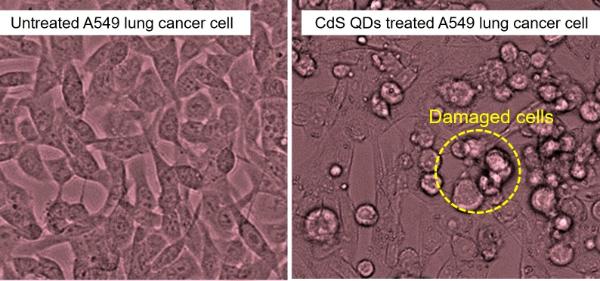
(Credit: NuCastiel via Flickr)
Quantum dots are nanoparticles used in everything from computers and solar cells to tumour imaging. The process used to make them can be expensive and sometimes results in toxic side effects.
In the search for a plant-based alternative, the Swansea team mixed green tea leaf extract with cadmium sulphate (CdSO4) and sodium sulphide (Na2S). The solution was allowed to incubate, causing quantum dots to form. Working alongside two Indian universities, the UK-based researchers were initially able to back up previous work conducted on quantum dots made using tea leaves.
“Our research confirmed previous evidence that tea leaf extract can be a non-toxic alternative to making quantum dots using chemicals,” said lead researcher Dr Sudhagar Pitchaimuthu.
“The CdS quantum dots derived from tea leaf extract showed exceptional fluorescence emission in cancer cell bioimaging compared to conventional CdS nanoparticles. They also have other possible applications, for example in anti-microbial paint used in operating theatres, or in sun creams.”

(Credit: Swansea University)
Unexpectedly, the nanoparticles also inhibited the growth of lung cancer cells. By penetrating into the nanopores of the cells, the quantum dots destroyed up to 80 per cent of the cancer cells. According to the Swansea team, this is a brand new discovery.
“The real surprise, however, was that the dots actively inhibited the growth of the lung cancer cells,” said Dr Pitchaimuthu. “We hadn’t been expecting this. Quantum dots are therefore a very promising avenue to explore for developing new cancer treatments.”
“Building on this exciting discovery, the next step is to scale up our operation, hopefully with the help of other collaborators. We want to investigate the role of tea leaf extract in cancer cell imaging, and the interface between quantum dots and the cancer cell. We would like to set up a ‘quantum dot factory’ which will allow us to explore more fully the ways in which they can be used.”
The study is published in Applied Nano Materials.




Project to investigate hybrid approach to titanium manufacturing
What is this a hybrid of? Superplastic forming tends to be performed slowly as otherwise the behaviour is the hot creep that typifies hot...